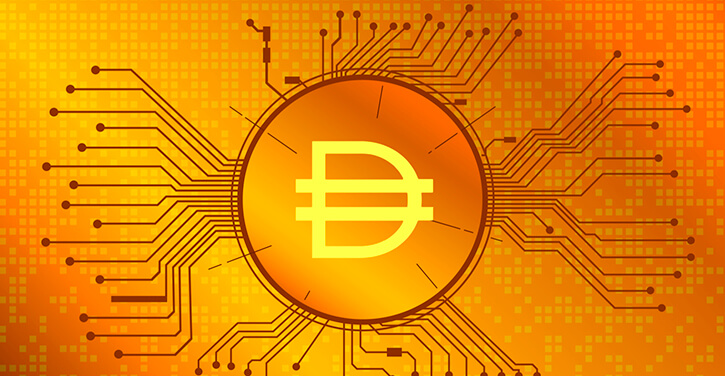
Near instant Dai withdrawals from the Ethereum scaling solution will be introduced later this year
With the average Ethereum transaction fee hitting an all time high last month of almost $40, there has been a lot of enthusiasm lately for layer 2 solutions that will increase Ethereum’s throughput, decrease its latency and greatly reduce gas fees.
One such solution is the Optimistic Virtual Machine (OVM) – a virtual machine developed by Public Benefit Corporation Optimism which uses rollups to support layer 2 protocols. Rollups are a scaling technique that move computation off-chain but keep some transaction data on-chain in a compressed form, and Ethereum founder Vitalik Buterin previously suggested that “the Ethereum ecosystem is likely to be all-in on rollups…” in the future.
Optimism’s mainnet launch is expected later this month, but it still faces the unsolved problem of withdrawal times. Although transferring tokens from layer 1 to layer 2 will be almost instant, transfers in the opposite direction will require a one week wait to allow for potential fraud proofs.
However, the MakerDAO community will be tackling this issue with the launch of the Optimism Dai Bridge, according to a post yesterday by Sam MacPherson from MakerDAO’s Smart Contracts Team. The bridge will allow layer 1 Dai to be locked up in order to mint layer 2 Dai, which can then be burned in exchange for near instant access to layer 1 Dai.
MacPherson said of the bridge: “This is a game changer not only for the Maker protocol, but the Ethereum ecosystem at large as we can finally offer a fast, trustless, decentralized off-ramp for optimistic rollups.”
Maker believes its liquidity, trustless nature and lack of counterparties that raise fees make it ideally suited to become the primary off ramp for Optimism, and its solution can be expanded to offer fast layer 2 to layer 1 swaps on any other token by routing the transaction through the Optimism Dai Bridge.
The Optimism Dai Bridge will be launched with the standard one week withdrawal times in the near future, with the introduction of the near-instant withdrawals anticipated in Q3 or Q4 of 2021.

